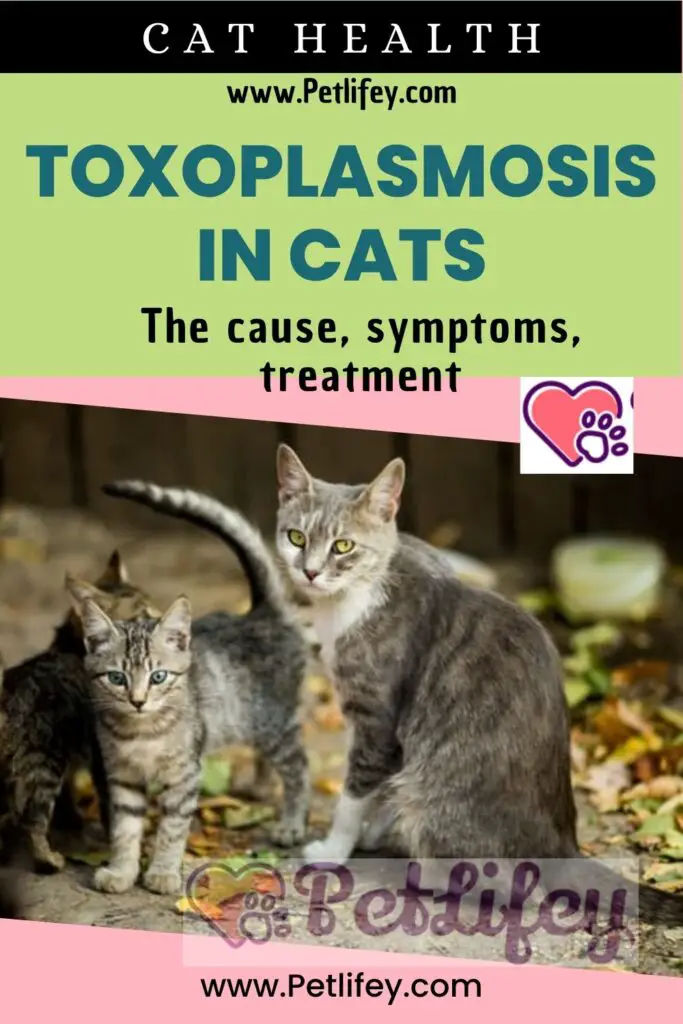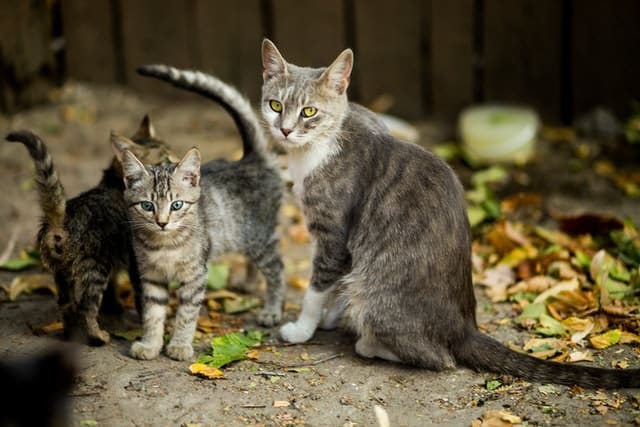
In this article we will talk about toxoplasmosis in cats and how the infection occurs, what are the symptoms and the treatment for the feline.
Toxoplasmosis in cats is a disease caused by the Toxoplasma gondii parasite. It is an intracellular parasite, of the coccidia family and generates it is one of the most common parasitic diseases in animals and people.
Its peculiarity is that although it can infect many animals, including humans, its only definitive host is the cat, this being the only animal that releases oocysts into the environment.
Cause and contagion of toxoplasmosis in cats
In general, a cat becomes contaminated as a puppy by the parasites of toxoplasmosis or when it goes out and hunts for small rodents that carry the encysted forms of this parasite. These rodents are defined as intermediate hosts, as they do not develop the disease, but it will be the cat as the definitive host of this parasite that develops the disease, as the ingested larvae mature to the adult stage of development in the feline’s body.
Once the larvae have grown into adults in the cat’s intestines, they begin to lay millions of eggs, which the cat excretes and spreads in its feces. Thus, the cycle of toxoplasmosis continues, leading to new contamination. Toxoplasmosis is a fairly common zoonosis, in most cases it is an infection without consequences for a healthy animal.
Only when the cat is weakened by a serious illness, such as cancer or feline leukemia, can he see the disease develop and deteriorate health due to this infection. Worse still, if an infected cat lives with a pregnant woman, the risks of malformation to the fetus are very real.
In this case, then let’s talk about a disease to watch out for for a pregnant woman who is not immunized. One sure thing to do is to carefully avoid coming into contact with cat feces.
For example by touching her waste, unwashed vegetables can also be the source of contamination, when they carry soil particles that have been contaminated with cat feces. The use of rubber gloves is recommended for pregnant women who are gardening or handling the soil in a place frequented by the cat.
Symptoms of toxoplasmosis in cats
Toxoplasmosis in cats is asymptomatic, that is, we will not observe clear signs that can give an indication that a contagion has occurred. That is why, more often than not, the cat shows no signs of the disease.
Toxoplasmosis is difficult to detect without a blood test, it is possible to observe some fever, a certain state of fatigue or diarrhea. While in the case of secondary infection, immunocompromised animals, such as those affected by the feline leukemia virus, are more susceptible to suffering from acute generalized toxoplasmosis, in addition to the following health problems:
- Organic necrosis
- Interstitial pneumonia
- myocarditis
- meningoencephalomyelitis
- chorioretinitis
- lymphadenopathy
- myositis
Diagnosis and treatment of toxoplasmosis in cats

Diagnosis of toxoplasmosis is problematic, and Toxoplasmosis is difficult to detect without a blood test, a definitive diagnosis is based on samples taken in post mortem examination or by biopsies.
In toxoplasmosis in cats, Toxoplasmosis is difficult to detect without a blood test, the most used treatment continues to be clindamycin for 30 days. Symptoms are rapidly reversed, except for ocular and neurological symptoms. Treatment of eye lesions is topical clindamycin along with topical or systemic corticosteroids.
Prevention
Fortunately, it is possible to considerably reduce the risk of human infection, follow minimal hygiene measures and be careful when storing meat. Here are some expert tips:
- Clean the cat litter box every day and disinfect it with boiling water. If it is done daily, even if your cat defecates with oocysts, they will not have reproduced yet and therefore will not be contagious at the time of daily grooming.
- Prevent the cat from hunting and avoid feeding them raw or undercooked meat.
- Cook the meat perfectly at least at 70 ° C
- Wash hands, utensils and surfaces carefully after handling raw foods.
- Wash all the vegetables carefully and scrupulously
- Wear gloves when handling garden soil that is potentially contaminated with cat feces.






